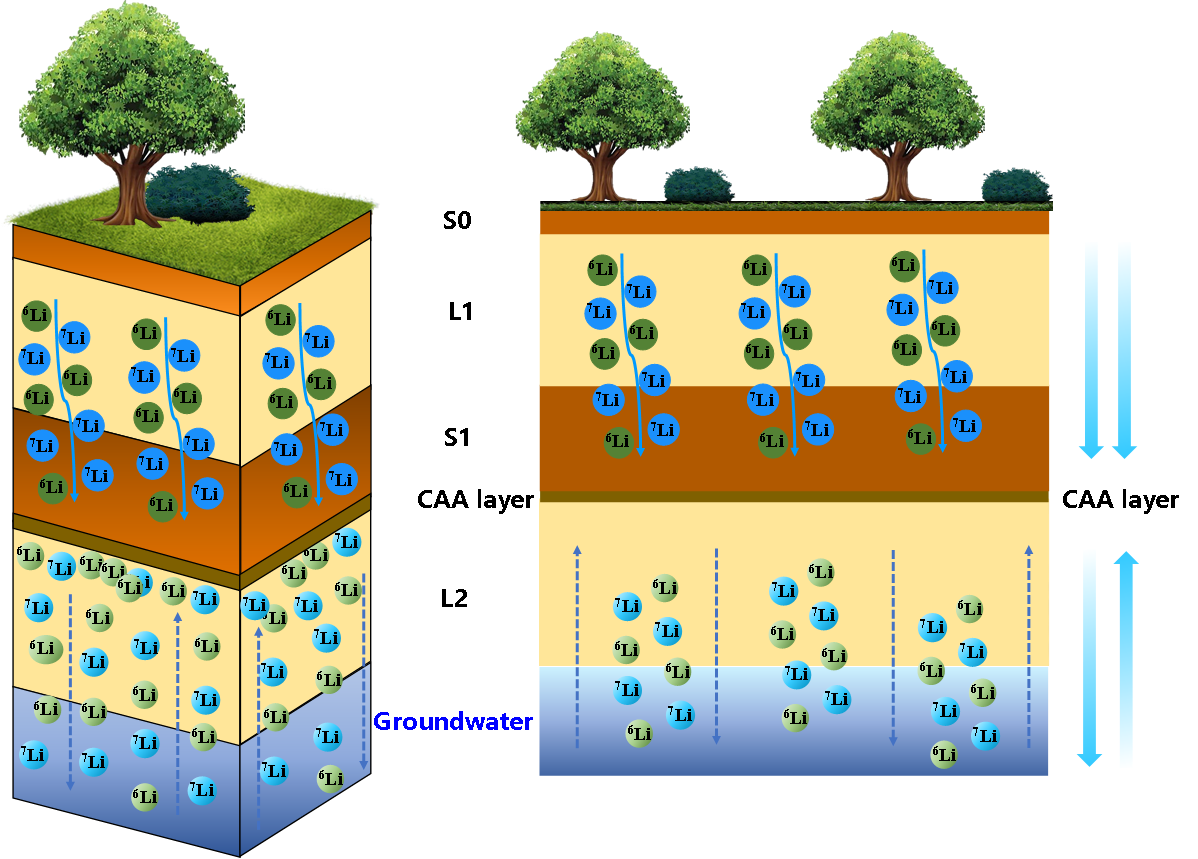Loess deposits serve as invaluable natural archives, chronicling Earth's climatic and environmental evolution through their compositional changes linked to East Asian Monsoon variability, post-depositional weathering, and groundwater activity. While these aeolian sediments offer critical insights into past climate dynamics, accurately quantifying water-rock interactions has remained an enduring challenge in paleoclimate reconstruction.
Addressing this knowledge gap, researchers from the Institute of Earth Environment, Chinese Academy of Sciences, in collaboration with domestic partners, have pioneered the application of lithium (Li) isotopes to decode complex weathering processes and groundwater influences in loess-paleosol sequences.
The study focused on the Weinan loess section in the southeastern Loess Plateau, where scientists conducted the first comprehensive analysis of lithium isotopic composition (δ⁷Li) across different geochemical phases - water-soluble, weak acid-leachable, and residual fractions - throughout a 22-meter profile spanning glacial-interglacial cycles. The results revealed striking contrasts in lithium distribution, with concentrations decreasing from residual to weak acid-leachable to water-soluble fractions, while δ⁷Li values exhibited an opposite trend. These patterns not only reflect the intensity of East Asian Summer Monsoon (EASM) variability but also highlight regional climatic differences, as evidenced by comparative data from the Luochuan section showing distinct monsoon-influenced signatures.
Crucially, the research uncovered how groundwater processes shape loess geochemistry over time. In dense caliche (CaCO₃ nodule) layers where groundwater flow becomes restricted, Li isotopes reach equilibrium with ambient groundwater, preserving a distinct hydrochemical signature that differs markedly from near-surface weathering patterns (Fig. 1). This discovery provides unprecedented insights into the long-term groundwater influences on loess deposits, offering a new dimension to our understanding of post-depositional alteration processes.

Fig. 1 Response of acid-leachable Li isotopic composition in Weinan loess to groundwater influences.(Image by HE, Maoyong et al)
This research, conducted within the innovative platform of the newly established State Key Laboratory of Loess Science, pioneers the application of non-traditional stable isotope tracing techniques to the study of Quaternary loess deposits. It successfully achieves a methodological breakthrough in utilizing this technology for investigating surface material cycling and paleoclimate reconstruction. This innovative approach holds significant promise for enhancing the precision of paleoenvironmental information extracted from loess sequences.
This work was recently published in Global and Planetary Change, this research was supported by the CAS Western Light Cross-Team Project, the National Natural Science Foundation of China, and the Shaanxi Loess Plateau Earth Critical Zone National Field Observation and Research Station.
 © 2015 Institute of Earth Environment,CAS
© 2015 Institute of Earth Environment,CAS Address:No. 97 Yanxiang Road, Xi'an 710061, Shaanxi, China

 Location :
Location :